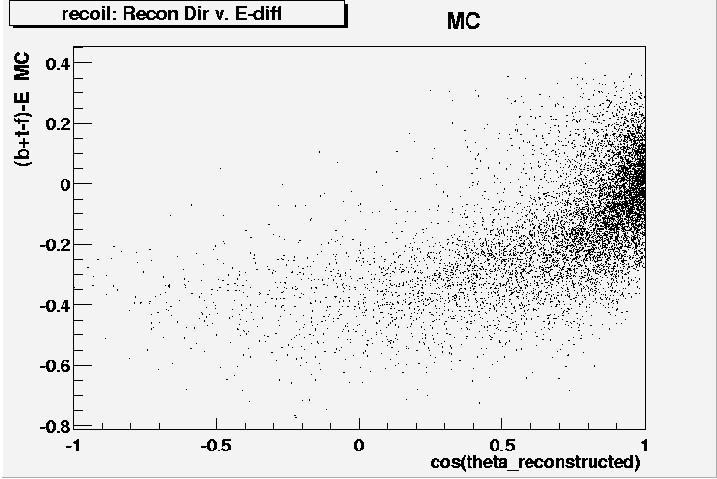-
We have discovered that the reason for the depletion in generated Gottfried- Jackson cos(theta) is the simulation of the RADPHI triggers in Gradphi. It appears that the MAM trigger, requiring the total energy in the LGD to be over the MAM threshold, caused the depletion in cos(theta) along the beamline. This would occur because of the beam hole in the LGD. Thus, when we thought we were looking at the true generated event sample, we were not, as some of the generated events had been discarded by the simulation software. The triggers were turned off and the generated event plots now look flat.
-
The triggers also affected the generated t distribution, possibly through the requirement that there be at least 1 TDC count through each of the 3 BSD layers. The acceptances and acceptance-corrected distributions were recalculated and are shown below.
- Invariant Mass Distributions
- Momentum Transfer Distributions
- Cos(theta) Distributions
- Phi Distributions
Recoil Studies
-
We have also studied the effects of the cut on the cosine of the angle between the reconstructed recoil direction and the direction of (beam+target-forward), which was discussed in the May 02 log entry. Below is the same graph as found in the May 02 entry except in Monte Carlo rather than data.
-
Below is a graph of the difference in energy between reconstructed (beam+target-forward) and generated recoil energy in Monte Carlo. Note that negative values imply that generated energy is higher than reconstructed energy.
-
Finally, we have the 2 dimensional histogram of the 2 histograms above plotted against each other.
Notice the band of events running at cos(theta)<.8 and Ediff<0. This implies that there is a correlation between poor reconstruction of the recoil direction and energy loss during reconstruction.



